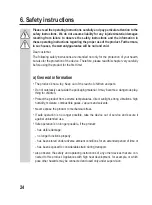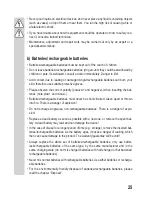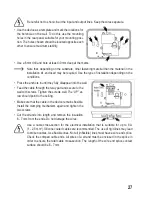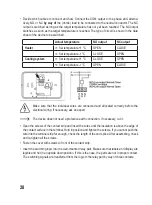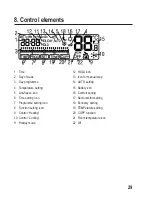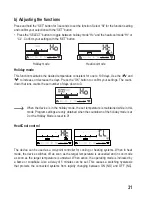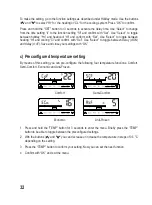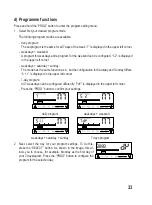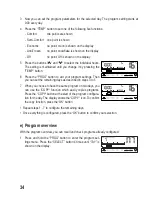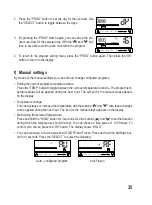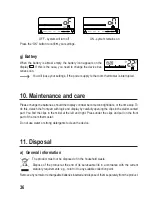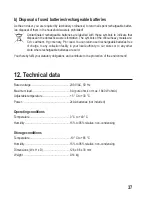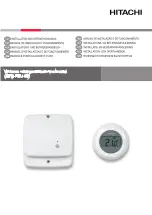
25
• Never pour liquids on electrical devices, and never place any liquid-containing objects
(such as vases) on top of them or near them. You run the high risk of causing a fire or
a fatal electric shock.
• If you have doubts about how the equipment should be operated or how to safely con-
nect it, consult a trained technician.
• Maintenance, adjustment and repair work may be carried out only by an expert or a
specialised workshop.
b) Batteries/rechargeable batteries
• Batteries/rechargeable batteries must be kept out of the reach of children.
• Do not leave batteries/rechargeable batteries lying around; they could be swallowed by
children or pets. If swallowed, consult a doctor immediately. Danger to life!
• Acid contact due to leaking or damaged single/rechargeable batteries can burn your
skin, therefore use suitable protective gloves.
• Please observe the correct polarity (po and negative/-) when inserting the bat-
teries (note plus/+ and minus/-).
• Batteries/rechargeable batteries must never be short-circuited, taken apart or thrown
into fire. There is a danger of explosion!
• Do not recharge single-use, non-rechargeable batteries. There is a danger of explo-
sion!
• Replace a dead battery as soon as possible with a new one, or remove the spent bat-
tery. A dead battery may leak and can damage the device!
• In the case of disuse for a longer period of time (e.g., storage), remove the inserted bat-
teries/rechargeable batteries. As the battery ages, it poses a danger of leaking, which
then can cause damage to the product. The warranty/guarantee will be void!
• Always replace the whole set of batteries/rechargeable batteries, only use batter-
ies/rechargeable batteries of the same type, by the same manufacturer and in the
same charging state (do not mix charged batteries with half-charged or flat batteries/
rechargeable batteries).
• Never mix normal batteries with rechargeable batteries. Use either batteries or recharge-
able batteries.
• For the environmentally friendly disposal of batteries/rechargeable batteries, please
read the chapter “Disposal”.














